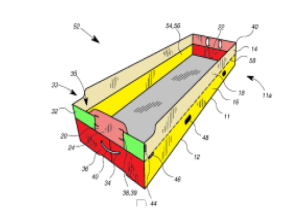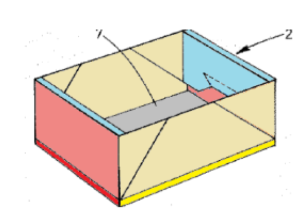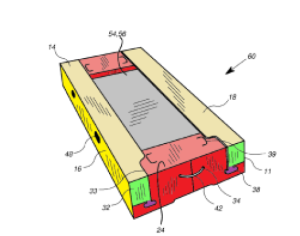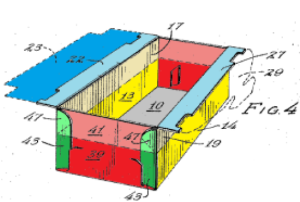The following is the latest development of a closely watched patent case between Vandor Group, Inc. vs. Batesville Casket Company LLC. (Read background article here.)
Vandor Group, Inc. sued Batesville Casket Company and Batesville Services, saying that a product Batesville made—a cardboard cremation insert called the B-Insert—copied several of Vandor’s patented designs. Vandor’s invention was a foldable cardboard box used to temporarily hold a body. It could fit inside a rental casket for viewings and was designed to fold up for cheaper and easier shipping.
Vandor’s patents US8959732, US9649240, and US10098801 described this box as having foldable sides and ends, along with special corner flaps that helped keep it upright when in use. Batesville pushed back, arguing that these patents weren’t valid because the idea wasn’t new. They pointed to older patents, especially Patent No. 3,346,399, from 1967, by a man named Watson, that they said made Vandor’s design seem obvious, and therefore, unpatentable.
Watson’s patent was for a cardboard box used for baking bread dough. The box was folded flat when packed, but expanded as the dough rose during baking. The key question became: Could a bread box from the 1960s be relevant in judging a modern funeral product? Vandor said no, claiming that storing bread and storing bodies are entirely different things. But the court didn’t agree.
According to patent law, an older invention can be considered “analogous prior art“—relevant to judging a newer patent—if it’s from a similar field or solves a similar problem in a way that someone skilled in that area would recognize. In this case, both the bread box and Vandor’s box were designed to switch between a folded and upright form. So even though one was for baking and the other for funerals, the court said the structural concept was the same.
The court also reviewed expert opinions from both sides. Vandor tried to get Batesville’s expert thrown out, but the court said the expert’s approach was solid enough under the law. If Vandor disagreed, the court said they could challenge the expert’s claims through questioning—not by excluding them.
Although patents are usually assumed to be valid, they can be canceled if someone proves the invention was “obvious.” To figure that out, courts look at things like: how skilled someone in the field is, what was already known, how different the new idea is, and whether things like success in the market support the invention’s value.
In this case, the court agreed that the relevant skill was experience designing cardboard containers. It found that both Watson’s bread box and another old patent called Wood (Patent No. 6,317,943 – a foldable cardboard casket) were important pieces of prior knowledge. Even though Watson’s box wasn’t for funerals, it had features like foldable panels and corner flaps—just like Vandor’s.
Vandor argued that Watson’s patent would actually discourage someone from designing what they had built. But the court didn’t buy it—there was nothing in Watson’s patent that suggested such a design was a bad idea. In fact, the court said someone skilled in the field would likely combine ideas from both Watson and Wood to create something like Vandor’s box.
Vandor also pointed to things like strong sales and claimed that Batesville copied them. But the court said Vandor hadn’t shown that the success came from anything unique in the patent. It also found that Batesville had started developing its own product before Vandor even got the patents.
In the end, the court granted summary judgment to Batesville, meaning it ruled in their favor without a trial. It ruled that Vandor’s patents were invalid because the design wasn’t truly new or inventive. Even though the inspiration came from a bread box from decades ago, the court said the idea behind Vandor’s product wasn’t a big enough leap to deserve a patent.
The case was assigned to District Judge Matthew P. Brookman and Magistrate Judge Mario Garcia in the U.S. District Court of Southern Indiana Case No. 1:23-cv-00013.
 Indiana Intellectual Property Law News
Indiana Intellectual Property Law News





